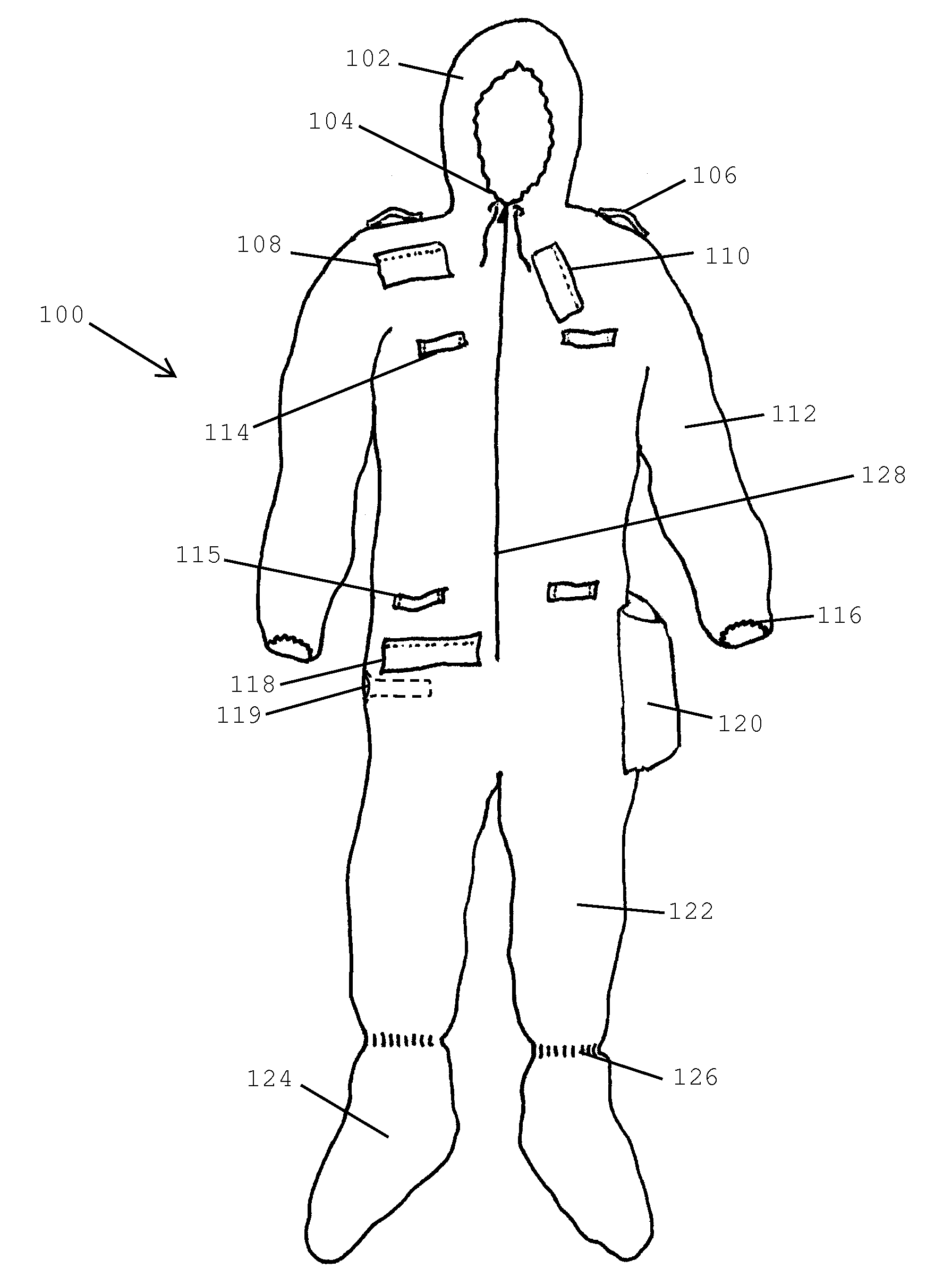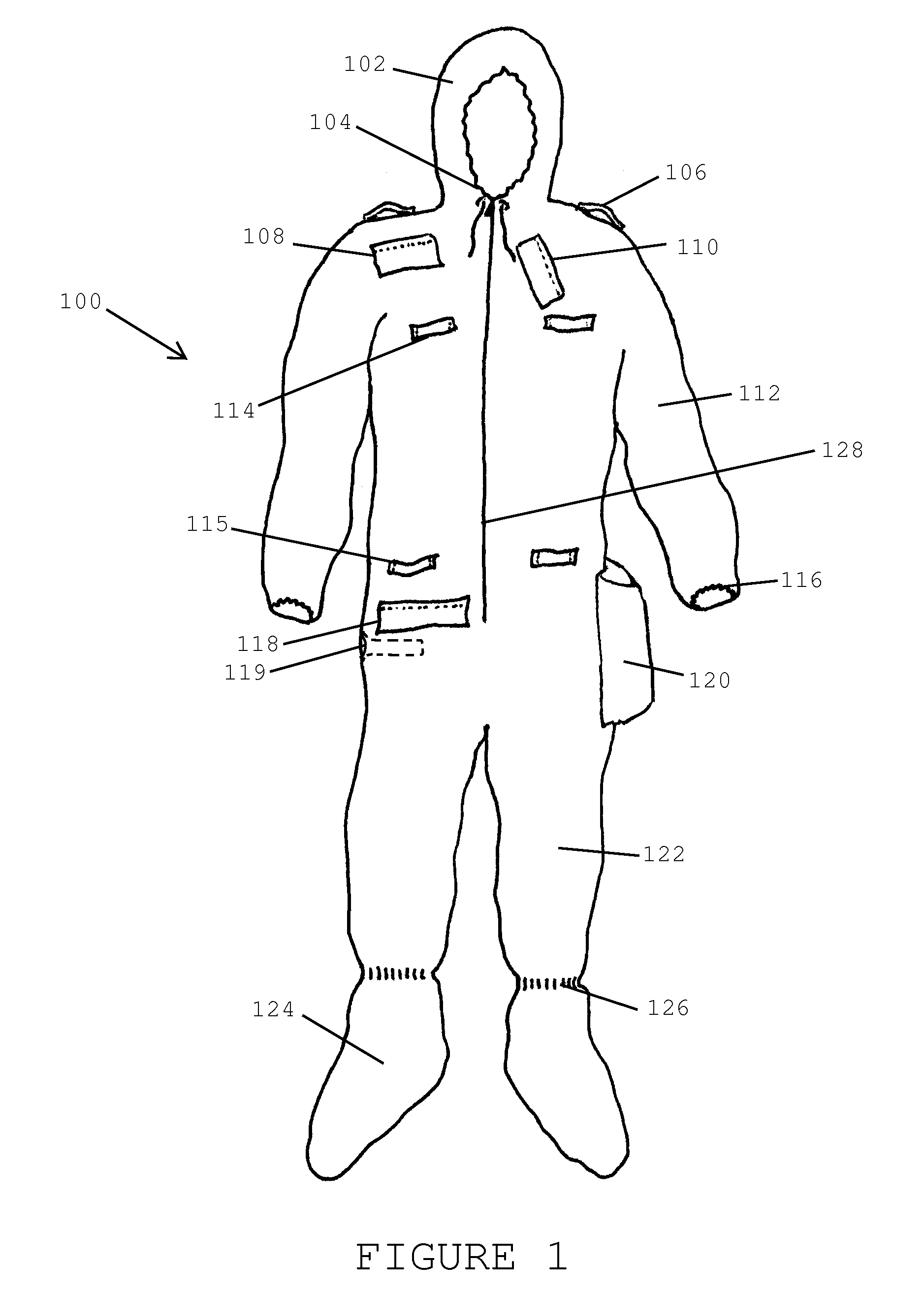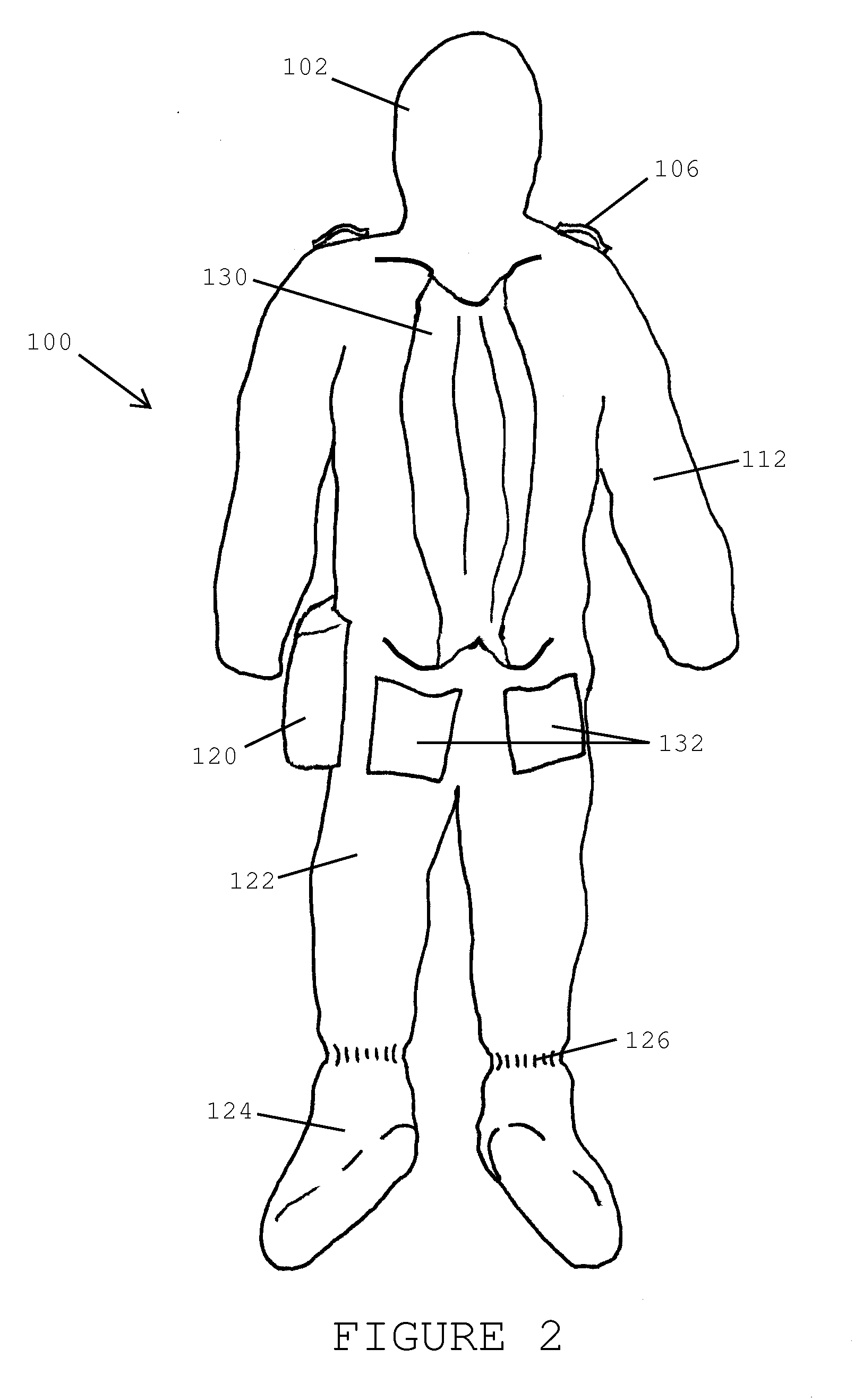Protective Garment for Nuclear Environments
a technology for protecting garments and nuclear environments, applied in chemical protection, nuclear engineering, nuclear elements, etc., can solve problems such as releasing contaminants in reusable products, and achieve the effects of simplifying the number of different coversalls, simplifying the disposal requirements of facilities, and improving comfor
- Summary
- Abstract
- Description
- Claims
- Application Information
AI Technical Summary
Benefits of technology
Problems solved by technology
Method used
Image
Examples
Embodiment Construction
[0017]One embodiment of a protective garment (hereinafter a “coverall”) for use in nuclear environments, is disclosed in FIG. 1, which illustrates a front view of the coverall 100. The coverall 100 is constructed from a tri-laminate 30 / 30 / 30 water resistant fabric which can be fabricated in various colors. Preferred construction techniques include lock stitch / ultrasonically welded seams, although other methods, such as use of serged seams or a two-needle felled stitch with taped seams, are also contemplated. The coverall 100 includes a hood 102, sleeves 112, and legs 122 that are attached to the body portion of the coverall 100 and are accessed by a user through a front opening operated by a zipper 128. The front of hood 102 has a draw string opening 104 for drawing the hood 102 tight against a breathing mask. To prevent contamination from other openings, the legs 122 of the coverall include attached boots 124 with elastic 126 at the ankle, and the sleeves 112 include elastic 116 at...
PUM
 Login to View More
Login to View More Abstract
Description
Claims
Application Information
 Login to View More
Login to View More - R&D
- Intellectual Property
- Life Sciences
- Materials
- Tech Scout
- Unparalleled Data Quality
- Higher Quality Content
- 60% Fewer Hallucinations
Browse by: Latest US Patents, China's latest patents, Technical Efficacy Thesaurus, Application Domain, Technology Topic, Popular Technical Reports.
© 2025 PatSnap. All rights reserved.Legal|Privacy policy|Modern Slavery Act Transparency Statement|Sitemap|About US| Contact US: help@patsnap.com



